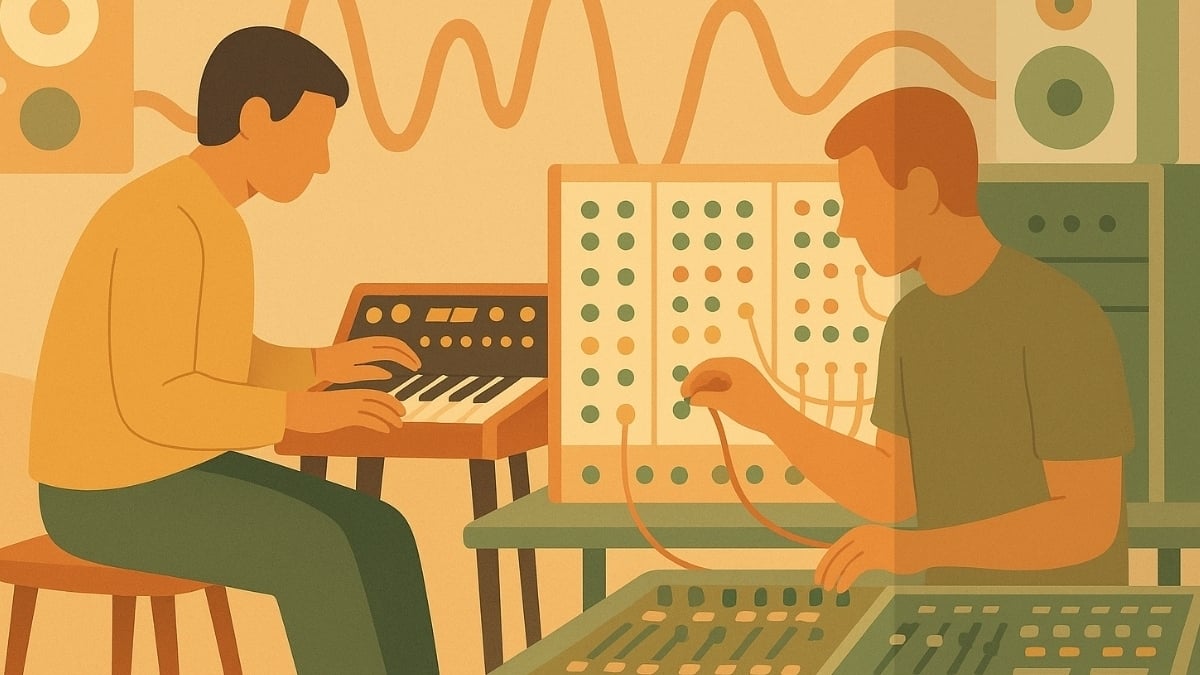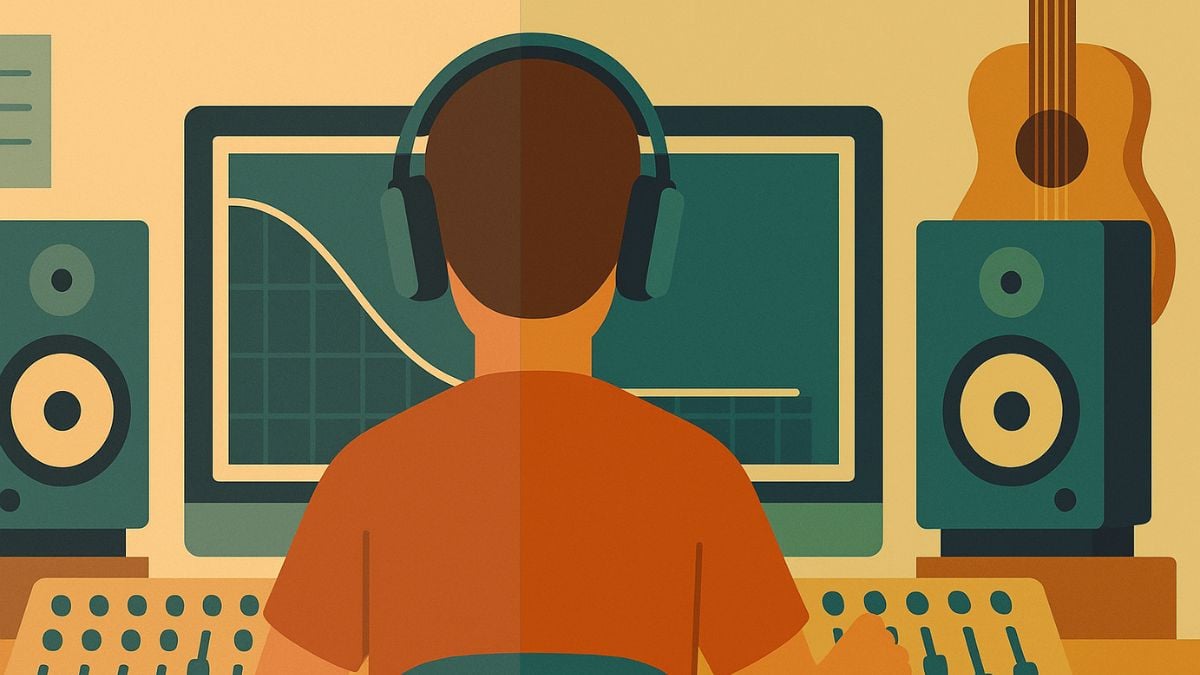What is Gain in Audio? A Beginner's Guide to Signal Processing

What is gain? What is Volume? Are they the same thing? Does it matter? If you’re just starting out with music production, there’s a good chance that one or more of these questions have occurred to you – and the answers are not necessarily obvious but they are important.
Thankfully, once we start digging into this subject you’ll see that it’s not overly complicated – and you’ll also see that a proper understanding of these concepts can actually help you to craft better mixes.
What Is Gain?
Gain is the term used to describe the amount of amplification that is applied to a signal, and it is normally measured in decibels (dB for short). This term is most commonly used to describe the level of a signal before it is sent through any processors or effects. Most engineers use the term to describe the level at which audio enters the DAW – but (perhaps confusingly) – gain can also be used to describe processes that take place within DAW sessions too.
To explain this properly, we need to bring some examples into play. When you record a microphone signal into your DAW, that signal requires a significant boost. This is because microphone signals are very weak by nature.
We, therefore, need to plug our microphones into a pre-amp that can boost its signal – your audio interface will contain one or more preamps for this purpose. Gain is the term for the amount of amplification that is applied to the microphone signal by the preamp.
So we adjust the gain of a signal to ensure that we have a good recording level coming into our DAW. But we can also adjust the gain of a signal inside our DAW at various points in the signal path. An obvious example of this is when we use a compressor.
A compressor reigns in the loudest parts of an audio signal in order to make it more consistent in level. This process makes the audio signal quieter. Most compressors therefore include a control called ‘makeup gain’ in order to boost the entire signal once it has been compressed – bringing it back up to a level that is useable in the mix.
This gain adjustment is a similar process to the one we go through when we put a mic through a preamp – only this time the process is digital rather than analogue.
There is one more definition of gain that is worth engaging with, as it’s entirely possible you’ll come across it in your work as a producer, and that’s how the word gain is used in the context of guitar amps. On a guitar amp, the gain control adjusts the level of the preamp. By turning this up, guitarists can overload the circuits of their amps, producing distortion.
Once again, the level being adjusted is that of the signal going into the system. From a technical perspective, a similar thing happens here to the process in our first example, when we discussed a mic preamp.
However, as the primary function of the gain control on a guitar amp is to generate distortion, the terms gain and distortion can sometime be used interchangeably in this context. So if a guitarist asks you “does it need more gain?” they are probably asking if their sound is distorted enough.
What Is Volume?
Compared to gain, the definition of volume is relatively straightforward. Volume is the level of sound coming out of a system. It’s the level of the audio that is being sent to the speakers. When we talk about volume, we’re essentially talking about how loud something is.
Volume is also often measured in dB, and the volume of a mix can be adjusted by moving the main fader or by turning individual tracks up or down. We can adjust the volume of a device such as a car stereo or a guitar amp by simply turning it up or down.
Gain Vs. Volume - What's The Difference?
To summarise, the gain is the level of an audio signal entering your DAW, and it can also refer to the level of a signal as it passes through processors in your signal chain. Volume is the level of the signal that is leaving your system – and being sent to your speakers or headphones.
A really important point to note is that changing the volume will not make any difference to the tonal qualities of the sound you are working with – it just makes it louder or quieter. However, by altering the gain, you can drastically change the tonal quality of an audio signal.
Let’s provide you with an example of why this is the case. Many plugins process a sound differently depending on the level of the audio that hits their input.
We’ve already discussed compressors – boosting the gain of a signal going into a compressor will cause it to be compressed more heavily. Similarly, boosting the gain of a signal going into an analogue modelling distortion plugin will cause it to distort the signal more heavily.
What Is Gain Used For?
You already know that we can adjust the gain of audio going into our DAW. This is an important part of the audio production process. If we return to the example of setting the gain on a microphone signal, we can explain why.
Earlier, I mentioned that a microphone signal is too quiet to be useable unless it is boosted by a preamp – this is because if the signal isn’t boosted, it’s too close to the noise floor of the system that is being used to record it.
All audio systems produce low levels of noise due to their operation – the electronic components of pieces of equipment, such as audio interfaces, don’t operate silently.
The noise these components generate is what is termed the noise floor, and it makes its way into our recordings. If an input signal is too close to the noise floor in level, then we will be left with a poor signal-to-noise ratio.
We will be able to boost a low microphone or instrument signal later on in our DAW, but in doing so, we will also boost the noise that has been recorded along with it – this will then be audible in our productions.
We, therefore, need to ensure that we have a good signal-to-noise ratio when we make our initial recordings. If we set the gain so that our mic signal is far above the noise floor (but not loud enough to distort), then our recordings should sound nice and clean. The noise floor is so low in comparison with our healthy mic or instrument signal that the noise is not noticeable in a final recording.
So that’s why setting gain levels is important on the way into your system – but setting them in your DAW is also important, and this is because of gain staging.
What Is Gain Staging? Gain, Volume, and Level
Before we get into gain staging, let’s recap our terminology one last time. Gain is the amount of amplification that is applied to a signal. Volume describes how loud the sound is as it leaves the system. The level can be used to describe the relative balance of each track in the session.
Gain staging is the process of setting the optimal level of audio signals at each stage of the signal chain in order to achieve the best sound quality with the least amount of noise and distortion. Your signal chain is the path that your audio takes through your system – it begins with your input, passes through your DAW, where it might be subject to several effects processes, and then it continues to your output.
Gain staging begins at the input stage, where we need to ensure that there is a good signal-to-noise ratio, as described above. Once the audio signal has entered your DAW, you need to think about all the places where gain staging can come into play.
You should monitor the signal levels at the input and output of every plugin you use in the audio processing chain. In some cases, when you use multiple plugins on a single channel, there may be clipping or distortion that occurs between them.
This can happen when one plugin amplifies the signal excessively, while the following plugin reduces it, causing clipping to go unnoticed on the track fader.
It is important to keep an eye on not only the plugin levels but also the fader levels, send levels, and other parameters that may affect the overall signal level.
Clipping in the digital domain is less of a problem than it used to be, thanks to floating point processing that is now used in many DAWs. However, it’s still good practice to try and ensure that the signal going into each of your plugins is the same as the signal coming out.
Keeping tabs on the levels in this way will prevent distortion if you are not using floating-point processing, but it is a great workflow for yet another reason too. Maintaining consistent loudness levels across the signal chain is crucial for achieving accurate and reliable judgments of the effects of each plugin on the sound of your audio.
Our ears tend to perceive louder sounds as better, which can make it difficult to distinguish whether a plugin is actually improving the sound or just making it louder.
By maintaining consistent loudness levels through gain staging, we can remove this variable and ensure that we are making accurate assessments of the impact of each plugin. This makes our judgements more reliable and helps us achieve the best possible sound quality.
Understanding gain is crucial in music and audio production as it is a fundamental concept that can greatly impact the quality of your recordings. Having a clear understanding of the definition and application of gain will help you to get the best results out of your equipment.
If you’ve made it through this article, you now have a solid foundation for capturing sound with your audio interface and adjusting levels in your digital audio workstation – congrats! This knowledge will be invaluable as you continue to develop your skills in music and audio production.



Comments:
Login to comment on this post